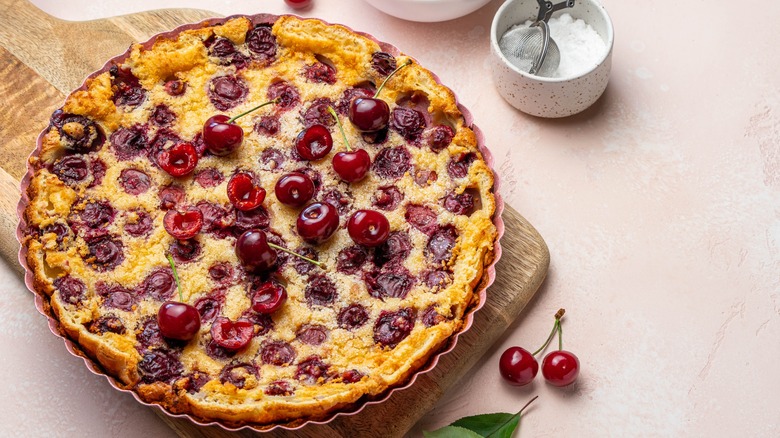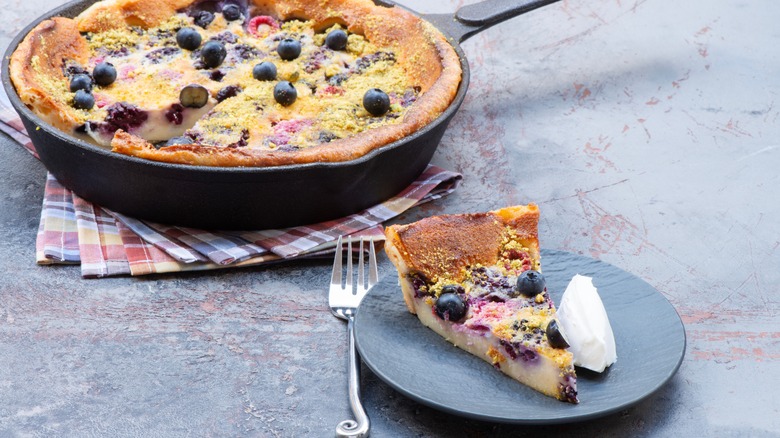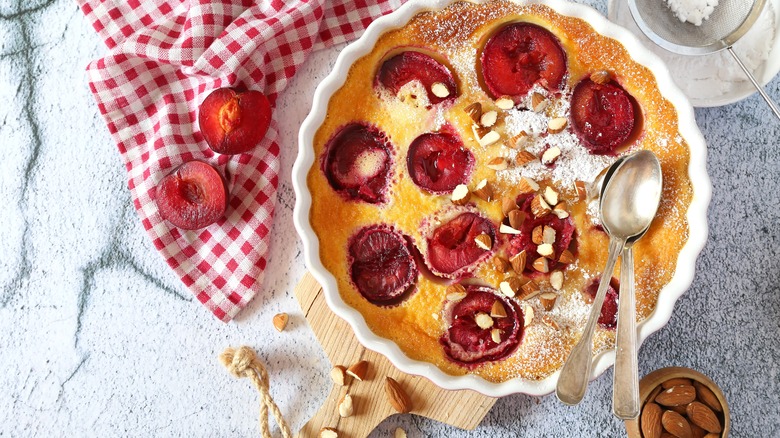The Blender Hack That Makes Your Clafoutis Dreams Come True
When it comes to dessert, clafoutis (pronounced kla-foo-TEE) manages that tricky balance between impressive and simple. It can be adapted for seasonality or occasion and is made with mostly staple ingredients. And when whipping up clafoutis, one common appliance can make it even easier: Your blender.
Traditionally, clafoutis is made by whisking its essential ingredients by hand, but with a blender, you can incorporate all the elements more quickly and efficiently. With the blender, this step should take less than a minute at a high speed and will yield the light and frothy mixture you're looking for when creating your batter. The blender also ensures a completely homogenous mixture, and the aeration necessary for proper consistency, which is much harder to achieve by hand.
While some recipes suggest holding back on the flour until the last moments (as over-mixing any batter or dough can create a tough texture), others say you can go ahead and combine everything at once since this is such a fast process. Either way, you'll reserve the fruit for later, layering it in just before baking to create that abundantly fruity look.
Clafoutis culture
Clafoutis is somewhat of a cross between flan and a pancake, and the name is derived from the French word clafir, or "to fill," as the batter-based creation is typically layered with fresh fruit. Traditionally, it was made with unpitted black cherries, and some recipes still encourage modern bakers to stick to that practice. The argument is that the cherry pits add flavor — both a subtle bitterness and an almond-like essence (as cherries are cousins of almonds, which aren't nuts but fruits, actually). But to spare guests from having to sift pits from their dessert (and avoid any dental damage), today's recipes often call for almond extract or even almond flour instead.
In addition to the blender hack, another pro tip is to butter your baking vessel and then sprinkle it with sugar. Clafoutis is delicate and can stick to your pan, so this trick helps avoid a mess (and also adds flavor and caramelization). It will puff up during the baking process too (similar to a soufflé), so be careful not to overfill — about ¾ of the way should be safe.
Other fruits that are delicious in clafoutis
Clafoutis is fairly neutral in flavor and very lightly sweet, which makes it easy to customize (it can even be served as a savory dish with vegetables and cheeses). Cherries — pitted or not — are still a common sight, but you can also swap those for just about any fruit of your choice, from fellow stone fruits like apricots or peaches to berries or even pears, apples, and figs. The trick is to choose a fruit that's not too juicy. If you do wind up with too much liquid in the batter, however, you can add a bit of flour to help it bind. If you've chosen a juicier fruit, slightly bake some of the moisture out beforehand at a low temperature.
Serve as is with a dusting of powdered sugar, or add something crunchy like toasted nuts for a little texture — either mixed into the batter or sprinkled on top. Clafoutis can be served both warm and at room temperature, and it's perfect with ice cream or vanilla whipped cream. You can change up your preparation method for a slight spin — a grilled black cherry clafoutis made outside on the barbecue lends a touch of smoky contrast to the subtle sweetness. It's also possible to make this masterpiece ahead of time and pop it in the refrigerator the night before. With this blender hack, you can have an elegant and easy dessert guaranteed to impress no matter what.


